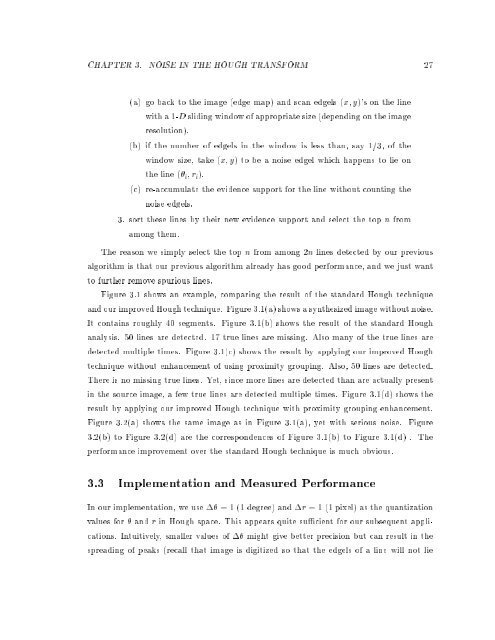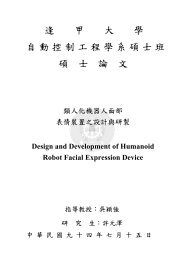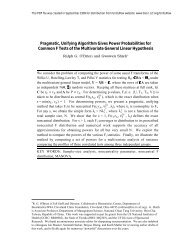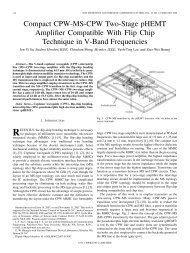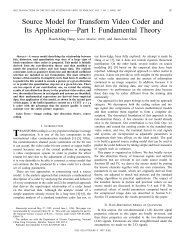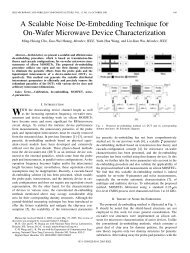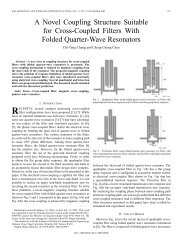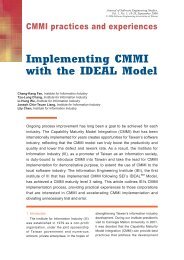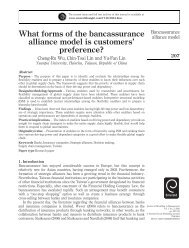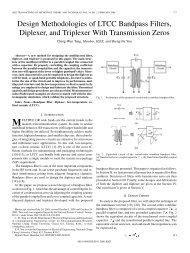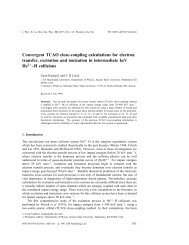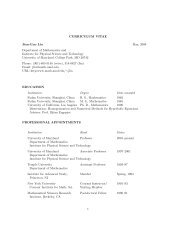A Probabilistic Approach to Geometric Hashing using Line Features
A Probabilistic Approach to Geometric Hashing using Line Features
A Probabilistic Approach to Geometric Hashing using Line Features
You also want an ePaper? Increase the reach of your titles
YUMPU automatically turns print PDFs into web optimized ePapers that Google loves.
CHAPTER 3. NOISE IN THE HOUGH TRANSFORM 27<br />
èaè go back <strong>to</strong> the image èedge mapè and scan edgels èx; yè's on the line<br />
with a 1-D sliding window of appropriate size èdepending on the image<br />
resolutionè.<br />
èbè if the number of edgels in the window is less than, say 1=3, of the<br />
window size, take èx; yè <strong>to</strong> be a noise edgel which happens <strong>to</strong> lie on<br />
the line èç i ;r i è.<br />
ècè re-accumulate the evidence support for the line without counting the<br />
noise edgels.<br />
3. sort these lines by their new evidence support and select the <strong>to</strong>p n from<br />
among them.<br />
The reason we simply select the <strong>to</strong>p n from among 2n lines detected by our previous<br />
algorithm is that our previous algorithm already has good performance, and we just want<br />
<strong>to</strong> further remove spurious lines.<br />
Figure 3.1 shows an example, comparing the result of the standard Hough technique<br />
and our improved Hough technique. Figure 3.1èaè shows a synthesized image without noise.<br />
It contains roughly 40 segments. Figure 3.1èbè shows the result of the standard Hough<br />
analysis. 50 lines are detected. 17 true lines are missing. Also many of the true lines are<br />
detected multiple times. Figure 3.1ècè shows the result by applying our improved Hough<br />
technique without enhancement of <strong>using</strong> proximity grouping. Also, 50 lines are detected.<br />
There is no missing true lines. Yet, since more lines are detected than are actually present<br />
in the source image, a few true lines are detected multiple times. Figure 3.1èdè shows the<br />
result by applying our improved Hough technique with proximity grouping enhancement.<br />
Figure 3.2èaè shows the same image as in Figure 3.1èaè, yet with serious noise. Figure<br />
3.2èbè <strong>to</strong> Figure 3.2èdè are the correspondences of Figure 3.1èbè <strong>to</strong> Figure 3.1èdè . The<br />
performance improvement over the standard Hough technique is much obvious.<br />
3.3 Implementation and Measured Performance<br />
In our implementation, we use æç = 1 è1 degreeè and ær = 1 è1 pixelè as the quantization<br />
values for ç and r in Hough space. This appears quite suæcient for our subsequent applications.<br />
Intuitively, smaller values of æç might give better precision but can result in the<br />
spreading of peaks èrecall that image is digitized so that the edgels of a line will not lie


